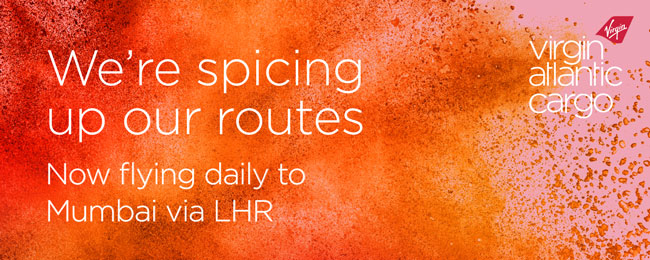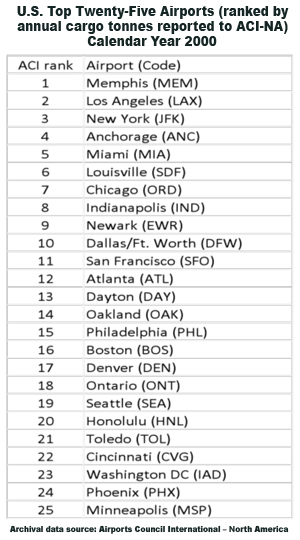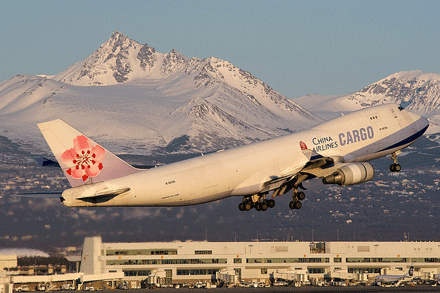
 |
 |
 #INTHEAIREVERYWHERE |
| Vol. 18 No. 68 | Tuesday
October 29, 2019 |
| |
 |
Air Cargo Americas (ACA) gets
underway this week in Miami, October 29-31.
|
 |
In an air cargo industry that often seems to gauge performance by year-on-year comparisons, airport planners ruminating on 20-30 year forecasts can seem anachronistic but such are the timeframes required to frame considerations of the optimal use of limited on-airport land with generations of repercussions in the balance. Friction between airport operators with fixed assets and their tenants (airlines and handlers) with more portable assets is inevitable. One can reposition an aircraft and GSE equipment much easier than one can relocate a building. Airports’ decisions may produce a building that still will be used in fifty years, while having immediate impacts on neighboring communities, roadways and other infrastructure. Airport operators must also be mindful about opportunity costs, as this utilization competes with other potential uses of finite on-airport land. In this first installment of a multi-part series, we provide a reminder of the air cargo landscape of U.S. airports almost twenty years ago, using Calendar Year 2000 as our base year. Unavoidably, we will include a couple of spoilers but most industry observers already know how these stories end. How much changed in the previous twenty years reminds us how much can change in the next twenty years. In Calendar Year 2000, U.S. airport operators were collectively trying to catch up to near-continuous growth stretching airport capacity since the air cargo industry’s deregulation in 1977. Airport master plans completed in the 1990’s consistently observed that the cargo industry far outpaced its passenger counterpart and commonly projected at least a doubling of air cargo tonnage and all-cargo operations by the Year 2020. Gateways such as New York’s John F. Kennedy (JFK) International Airport and Los Angeles International Airport (LAX) were anticipated to have reached their maximum operating capacity this decade – a belief that precipitated enthusiasm for cargo-focused alternatives, such as Stewart International Airport in New Windsor, NY and the Southern California Logistics Airport in Victorville, CA. Wasting a few hundred million dollars apiece, the Global TransPark in Kinston, NC and MidAmerica St. Louis Airport in western Illinois provided expensive alternatives to airports that would need no alternatives in our lifetimes. At the historic U.S. gateways, legacy cargo facilities – some constructed between WWII and the Korean War – provided little flexibility for adaptation to modern needs. Not only had buildings been designed for a different era (when air cargo was evenly divided between freight and mail), but airside ramp was designed for smaller aircraft and landsides were designed for shorter commercial trucks. Making matters worse, off-airport commercial development clustered around airports so tightly that expansion was increasingly difficult without knocking down existing facilities. The capacity crisis was partially mitigated as the proliferation of third party cargo handlers leveraged equipment, labor and operating space to more efficiently accommodate multiple carriers in less space than individual self-handled carriers had often required. Still, outdated facilities with ill-fitting geometry could only accommodate so much improvisation and upcoming airline consolidations would exacerbate these limitations. Cargo growth was not only for big international gateways. Even medium-sized U.S. airports commonly hosted six all-cargo carriers: (alphabetically) Airborne Express, BAX Global, DHL, Emery Worldwide, FedEx and UPS. The inclusion of Kitty Hawk could stretch that list to seven in many markets. Multi-tenant cargo facilities were full and continued growth seemed certain enough to justify building dedicated facilities for individual all-cargo airlines even in modest markets like Jackson, Mississippi where I was working in the early to mid-1990’s when we cut the ribbon for a then-new Airborne Express facility. . Most envied were the all-cargo hubs clustered almost entirely in the Ohio Valley where cargo elevated the profile of several airports far less notable for passenger traffic. Emery Worldwide’s hub, Dayton (OH) International Airport, ranked #13 in total tonnage – immediately behind Hartsfield-Jackson Atlanta International Airport (ATL). BAX Global’s hub, Toledo (OH) Express Airport, ranked #21 – just ahead of DHL’s hub at Cincinnati/Northern Kentucky International Airport (CVG) and ahead of Houston’s George Bush Intercontinental Airport (IAH). Kitty Hawk’s hub, Fort Wayne International Airport (FWA), ranked #35 but still accounted for close to 200,000 metric tonnes of air cargo annually. Unranked due to reporting anomalies (ILN was not a member of ACI-NA and its all-cargo carriers were not included in the FAA’s T-100 data bank until years later) but undoubtedly deserving of being in that mix, Wilmington (OH) Airport (ILN) held the distinction of being the only U.S. airport owned and operated by an airline – Airborne Express. From 1980, ILN served as Airborne’s hub before becoming the hub for a combined DHL and ABX Air, Inc. (the surviving airline spun-off from Airborne that DHL – by then, a foreign-owned corporation - could not own) from 2003 through 2008. Once home to a now unimaginable number of air cargo hubs, the Ohio Valley suffered multiple hub closures. As the exhibit below demonstrates (spoiler alert!), the closure of hubs formerly operated by Emery Worldwide, BAX Global and Kitty Hawk reduced three airports’ combined annual tonnage from more than 1.4 million metric tonnes in 2000 to less than 20,000 combined metric tonnes in 2018. Adding the closed Airborne hub in Wilmington would make the picture even more severe. Ranking #100 among U.S. airports in total cargo tonnage, FWA was the highest-ranked of the trio in 2018.
 Albeit
with significant adjustments in order, the top seven (ranked by annual tonnage)
U.S. cargo airports in 2000 still comprise the top seven through 2018. FedEx’s
hub, Memphis International Airport was only about 20% larger than the second-largest
U.S. cargo airport (LAX) at the time. Albeit
with significant adjustments in order, the top seven (ranked by annual tonnage)
U.S. cargo airports in 2000 still comprise the top seven through 2018. FedEx’s
hub, Memphis International Airport was only about 20% larger than the second-largest
U.S. cargo airport (LAX) at the time. In addition to MEM at #1, FedEx was responsible for the #8 ranking of Indianapolis, the #9 ranking of Newark and the #14 ranking of Oakland. Similarly, UPS was responsible for the #6 ranking of its global hub at Louisville, the #15 ranking of Philadelphia and the #18 ranking of Ontario, and its regional hub made a significant contribution to the #10 ranking of DFW. Add the Emery Worldwide hub at #13 Dayton, the BAX Global hub at #21 Toledo and the DHL hub at #22 Cincinnati/Northern Kentucky and all-cargo carriers accounted for nearly half of the top twenty-five. Unfortunately, we lack the tonnage data to determine whether Airborne Express’s hub at Wilmington, OH would have joined that group. The remainder of the Top 25 mostly comprised major international gateways (led by LAX, JFK, MIA, ORD, DFW, SFO, ATL) that balanced international freighter activity with major passenger hubs. While integrated carriers readily developed their own hubs at less congested alternatives, three airports (EWR, DFW and PHL) served as integrated carriers’ regional hubs and as major passenger airline hubs with substantial international activity. The most unique entry, at #4, was the transpacific technical stop, Ted Stevens Anchorage International Airport (ANC). In August 2000, Northwest Airlines Cargo signed a lease for expansion of its ANC operation to include four wide-body aircraft parking positions with the option to expand to eight. The Northwest Airlines gateway was integral to aspirations to expand ANC’s cargo role beyond being a technical stop for crew changes and refueling.  The
top twenty-five also featured several major international passenger gateways
(BOS, IAD, SEA, MSP) with little or no scheduled international freighter
operations, as well as airports – DEN and PHX most obviously –
that were major domestic passenger hubs with no international freighters
and only marginal international passenger operations. All of these passenger
hub airports also had the benefit of serving relatively strong origin-and-destination
markets for cargo. The
top twenty-five also featured several major international passenger gateways
(BOS, IAD, SEA, MSP) with little or no scheduled international freighter
operations, as well as airports – DEN and PHX most obviously –
that were major domestic passenger hubs with no international freighters
and only marginal international passenger operations. All of these passenger
hub airports also had the benefit of serving relatively strong origin-and-destination
markets for cargo. While the closure of major all-cargo hubs at Dayton, Toledo, Wilmington (OH) and Ft. Wayne were undoubtedly particularly traumatic for those communities, the collapse of the carriers hubbing in those cities had residual effects at numerous other cities where vacancies were left in multi-tenant facilities, as well as dedicated facilities. Apart from these most dramatic cases, the composition of much of the top twenty-five U.S. cargo airports remained static through 2018 but with substantial movement within those ranks. Into the voids left by the former all-cargo hubs would move some major international gateways conspicuous by their absence in the 2000 top twenty-five – including Houston’s George Bush Intercontinental Airport (IAH) and Orlando International Airport. The Amazon effect would also make an impression in the 2018 rankings. That analysis follows in part two (“The Updated U.S. Air Cargo Airport Horizon”) of this series, while in part three we will review how the composition of the global top twenty has shifted by region between 2000 and the present. Michael Webber
|
|
 |
If
You Missed Any Of The Previous 3 Issues Of FlyingTypers Access complete issue by clicking on issue icon or Access specific articles by clicking on article title |
||
 Vol. 18 No. 65 United EcoSkies Soars In 2019 Her Art Here Finds Friendly Skies 2020 Sulphur Cap Will Slap Cargo Farewell Kind-Hearted Joe Chuckles for October 15, 2019 |
|
|
Publisher-Geoffrey Arend
• Managing Editor-Flossie Arend • Editor Emeritus-Richard
Malkin Film Editor-Ralph Arend • Special Assignments-Sabiha Arend, Emily Arend |
Send comments and news to geoffrey@aircargonews.com
|